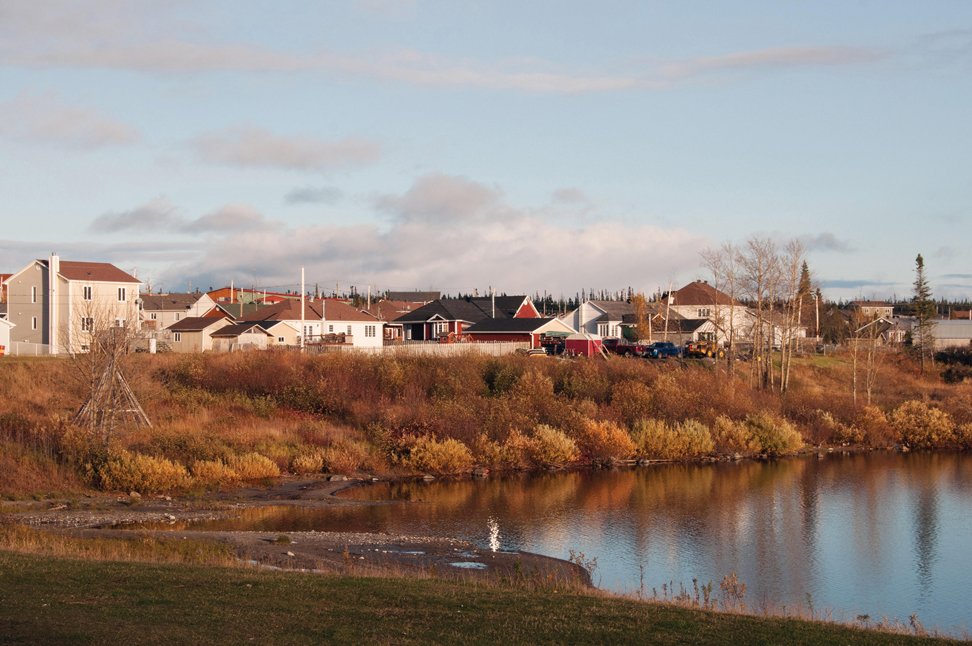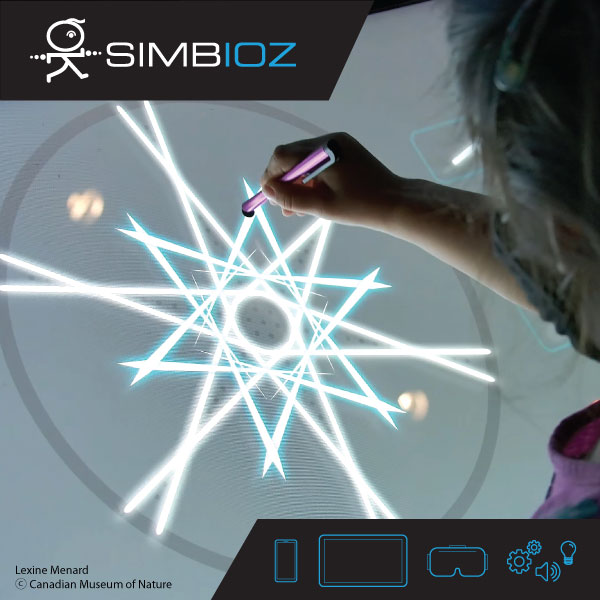
Cree village of Mistissini on Mistassini Lake, largest freshwater lake in the Province of Quebec. Photo — Megapress / Alamy Stock Photo
Story Tellers
Neanne Tanis Cheechoo
Wachiya! My name is Neanne Tanis Cheechoo, pronounced Nii-Yaan Daa-Nis in Cree which means Our Daughter. My mother is from Mistissini, QC and my father is from Moose Factory, ON. My name is derived from Cree dialects of Eeyou Istchee (Land of the people) and Moose Cree.
I am the Collections Officer at Aanischaaukamkiw Cree Cultural Institute (ACCI) in Ouje-Bougoumou, QC. Aanischa is derived from the Cree meaning to gather, Aanischaaukamkiw is a cultural space to connect people with Cree culture. Here, we keep Cree belongings to preserve the Cree way of life and tell their stories. I’d like to tell my story of how I ended up in the Collections Department of ACCI, where my workspace consists of passionate and dedicated staff.
I knew I was meant to be here when I watched our conservation intern give herself a pep talk on where to place the accession number on a snow wooden shovel. I was immersed by the philosophical and logical nature of a conservator’s critical thinking on accession number placements. I realized that there is a lot more to it than science in heritage preservation — as emerging museum professionals, we wear many hats. We are scientists, interpreters, historians, teachers, managers, gatekeepers, planners and so on. We are building relationships between past and present in the context of belongings and community.
I graduated from Carleton University with a Bachelor of Arts (Honours) in Anthropology and a minor in Indigenous Studies. I spent several years in Ottawa dedicated to my academic goals. Challenges were faced, obstacles were encountered, and sacrifices were made.
I made the move from my beautiful community of Mistissini to Canada’s capital and urban city living. Everything about Ottawa was new to me. It took a while to settle in, to adapt to a new lifestyle, introduced to new cultures and, really, a new way of life.
There was nothing Cree about urban city living. I moved into a 1 bedroom parquet-floored small apartment. Everything felt compartmentalized. Compact and noisy, all the wonderful city things. The city views made up for it. I had the city’s skyline in direct view from my couch, aside from the fleet of pigeons that often parked themselves on my balcony rail.
The truth is, did I know I wanted to study anthropology? No, I did not. I had no idea what people with an anthropology degree do. I took an introduction to anthropology in my first year and fell in love with it. I fell in love with what it meant to appreciate anthropology. Of course, anthropology is a discipline birthed from colonization (as are many academic disciplines of study) but it was not the historical/traditional anthropology that compelled me to continue. It was the need to understand people, human differences, and their stories.
During my undergrad, I thought of areas I’d like to be part of. My class and I toured a few museums. There was something about the architecture, the exhibits, the people reading the stories and marveling at what was on exhibit that captured me. I was intrigued by it all. I walked past a museum professional who was staring at an empty display case, with her hand resting under her chin, as if she were a painter, staring at a blank canvas — gathering thoughts of how and what to paint on the canvas. I asked, “what is she doing?” The tour guide said she was one of the museum’s curators. Next, we were taken to the lower level of the museum to see where collections are stored and where conservation practices are held. I got to see where some of the collections were and how they were stored. I noted the many conservation and security protocols are taken when collections are accepted into the museum.
The process of it all was tedious but I was drawn to it. I was drawn to the stories of people; I was drawn to how belongings of these people were cared for.
My experience in trying to be part of the museum industry was quite challenging — to become a museum professional one had to have certain requirements that I wasn’t quite eligible for. I found that the museum industry is a very competitive one. I decided to let the idea of being part of it go. Aanischaaukamkiw Cree Cultural Institute was emerging but there was little opportunity to hire new people due to limited funding, as most emerging museums face. One day, I got a phone call about a position open at ACCI. I already had a permanent job at the time in health care administration but decided to take it because I knew, this is where I should be. My current title is Collections Officer, but I am transitioning into the role of Coordinator of Collections and Exhibits. I am learning everything there is to know about museum practices by a dedicated team, and they are also learning about the Cree perspective. I feel seen and heard because of their support and their continued dedication to telling the stories of the Cree.
Like our intern who carefully chose where to place the permanent accession number of the wooden snow shovel — she was talking as if the object were a living, breathing thing. She understood that she wasn’t going to just place a number on the object and place it back into storage — because the object she was giving a permanent number to was going to live with it. The thought here of the wooden snow shovel not as something that once was, but is.
I’ve visited quite a few museums during my time spent down south. My experience with each one was different. Most museums will begin with their archaeological collections and present their stories and by whom it was discovered. This can be quite problematic when exhibiting First People’s belongings, as it centers on the discovery rather than their stories of Indigenous people.
When it comes to emerging museum practices, it is an opportunity to transition from traditional museum practices to diversified practices that encourage reciprocity. One of the key aspects in Indigenous cultures around the world is the practice of reciprocity. Here at the Institute, we are not only sharing stories of the Cree history but demonstrating a way of life of the Cree. This demonstration is practiced through approaches of how we accept, examine, store and exhibit Cree belongings to understanding the Cree perspectives.
In one of our exhibits, we have decorated Bear chins. The decorated Bear chins would be worn by the hunter to bring about good harvest. The owner requested that the Bear chins not be counted as there is a belief that counting the Bear chins will bring bad luck to the hunter. Our collections department takes this into immense consideration when it comes to conservation and museum practices.
I think as emerging museum professionals, we need to understand that we are telling stories, we need to understand how they are told and how they are cared for, our practices should be in alignment with the Indigenous perspective as the guiding principle when handling belongings in our care. One of the key indicators that ACCI does well is communication. The belongings of the Cree people and their stories are guiding principles in our museum practices. Their voices are heard and written into our policies. As an Indigenous emerging museum professional, it is important that my voice is heard, and I encourage others to speak up about introducing new ways of how to approach museum practices on Indigenous belongings and stories. M
